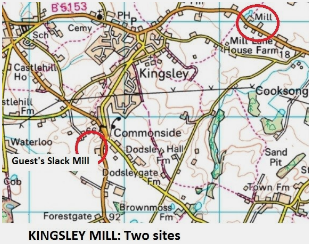If you have any more information or would like to contact the author please email This email address is being protected from spambots. You need JavaScript enabled to view it.
Introduction
The Domesday Survey (1086) was the first to gather a record of the people, property and, importantly, the value of the Norman conquest in Cheshire. Part of this valuation were the mills remaining after the land was plundered. Of the pre-Norman Saxon mills, only 18 are recorded of which 8 were recorded on the Gowy and it’s tributaries. If there were others, they were destroyed, not working or lost to the past.
Introduced by the Romans, water mills harnessed the power of streams and rivers to initiate the first industrial revolution in Britain. A technology used by the Saxons and extended with the arrival of the Normans. From Domesday to the 1850’s, some 700 water and windmills are known based on tithes and an epic survey of the 1970’s. Again, many others have dissolved through time to leave no trace. A 1000 mills has been suggested evidenced on field names.

Early water mills were constructed of timber. Many were little more than huts nestled on a small stream, their existence barely recorded in written documents. Maps offered some evidence, but the most useful maps came mostly after the 16th century when many mills had gone. As with modifications and extensions to homes, there were phases of mill building. Some disappeared, others were rebuilt on the same site and, yet others were new build, New designs and materials, improved technology, introducing wind power, encouraged the spread of mills across the county.
 Recorded in old manuscripts, estate maps and many other sources, our knowledge of mills and the fields they occupied, was greatly increased in the mid-19th century by the Tithe Survey. Rather like Domesday, it produced a wealth of information about every Cheshire parish. Every field was mapped with its name, owner and occupier. Lots of other material is contained in the written Award accompanying each map.
Recorded in old manuscripts, estate maps and many other sources, our knowledge of mills and the fields they occupied, was greatly increased in the mid-19th century by the Tithe Survey. Rather like Domesday, it produced a wealth of information about every Cheshire parish. Every field was mapped with its name, owner and occupier. Lots of other material is contained in the written Award accompanying each map.
In going through every parish tithe in Cheshire, the variety of field names was fascinating, but one was paramount, mill field. Often a field name continued in use for generations and none more so than mill field. Despite hundreds of such fields on tithe maps, only a small number show a mill. Present or not, the name points to the importance of a mill in the community. Through the centuries it meant a watermill, windmill or both, was there in the past and only serious research can resurrect it; the 1970’s survey did just that.
…………………………
Part 2 of this article, A Tale Of two Mills can be found at https://www.kingsleyvillage.co.uk/index.php/10-articles/491-a-tale-of-two-mills


